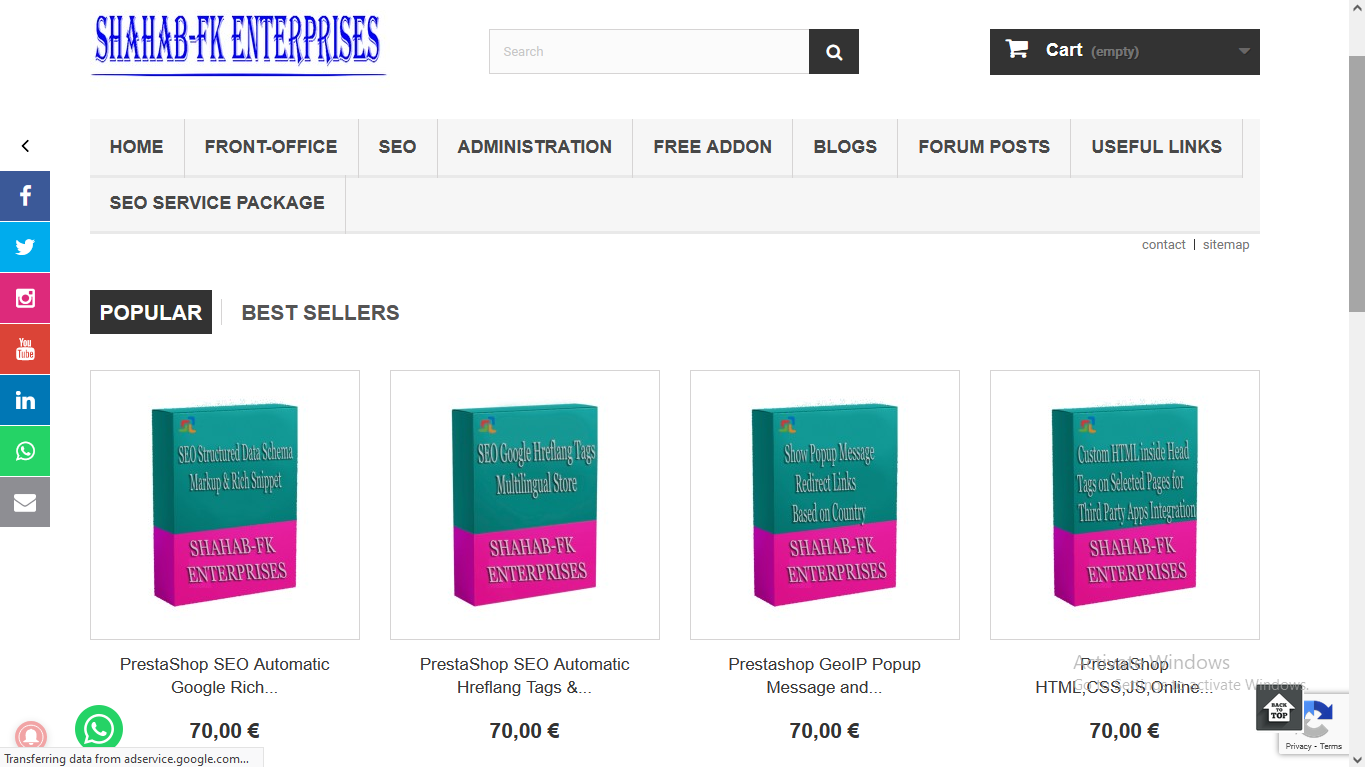Indexing your PrestaShop store’s product pages on Google is essential for increasing your store’s visibility in search engine results. To ensure your PrestaShop product pages are properly indexed on Google, follow these steps:
- Create and Submit a Sitemap:
- Generate a sitemap of your PrestaShop store using a sitemap generator or a PrestaShop module.
- Ensure that the sitemap includes all your product pages, categories, and other important pages.
- Submit your sitemap to Google Search Console. This allows Google to discover and index your pages more efficiently.
- Optimize Product Page URLs:
- Ensure your product page URLs are SEO-friendly and descriptive. Avoid using generic or random URLs.
- Enable “Friendly URL” options in PrestaShop, which automatically generates user and SEO-friendly URLs.
- Optimize Product Descriptions and Content:
- Write unique, high-quality product descriptions with relevant keywords. Avoid duplicate content.
- Use proper HTML formatting and structured data (e.g., Schema.org) to help search engines understand your product information.
- Optimize Images:
- Optimize product images for web use by reducing file size without compromising quality. Compressed images load faster and improve user experience.
- Use descriptive image file names and alt tags with relevant keywords.
- Use Robots.txt and Meta Robots Tags:
- Ensure that your site’s robots.txt file and individual product pages don’t have instructions that prevent indexing (e.g., “noindex” meta tags).
- Monitor and Fix Crawl Errors:
- Regularly check Google Search Console for crawl errors and fix them. Common issues include broken links, server errors, or redirects.
- Improve Page Load Speed:
- A faster website not only improves user experience but also contributes to better search engine rankings. Use tools like Google PageSpeed Insights to optimize your site’s speed.
- Generate Quality Backlinks:
- High-quality backlinks from reputable websites can boost your website’s authority and visibility in search results. Consider guest posting, outreach, and other link-building strategies.
- Social Media and Content Marketing:
- Promote your products and content on social media platforms and through content marketing. The more your products are shared and talked about, the better your chances of being indexed and ranked by Google.
- Regularly Update and Add New Products:
- Regularly update your PrestaShop store with new products, content, and reviews to keep your website fresh and appealing to search engines.
- Use Structured Data Markup:
- Implement structured data markup (Schema.org) to provide additional information to search engines about your products, prices, availability, and reviews.
- Mobile Optimization:
- Ensure that your PrestaShop store is mobile-responsive and optimized for mobile devices, as Google gives preference to mobile-friendly websites.
Remember that search engine optimization (SEO) is an ongoing process. Continuously monitor your website’s performance, search rankings, and traffic, and make adjustments as necessary to improve your PrestaShop store’s presence in Google search results.

